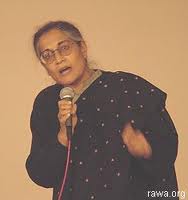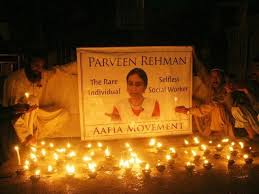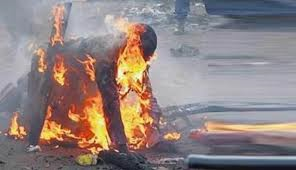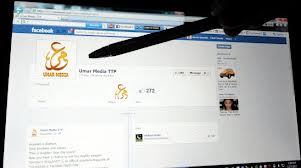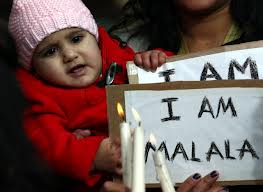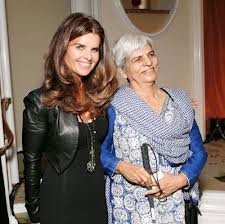Brian Caffo teaches a public-health course at Johns Hopkins University that he calls a “mathematical biostatistics boot camp.” It typically draws a few dozen graduate students. Never more than 70.
This fall, Caffo was swarmed. He had 15,000 students.
They included Patrycja Jablonska in Poland, Ephraim Baron in California, Mohammad Hijazi in Lebanon and many others far from Baltimore who ordinarily would not have a chance to study at the elite Johns Hopkins Bloomberg School of Public Health. They logged on to a Web site called Coursera and signed up. They paid nothing for it.
These students, a sliver of the more than 1.7 million who have registered with Coursera since April, reflect a surge of interest this year in free online learning that could reshape higher education. The phenomenon puts big issues on the table: the growth of tuition, the role of a professor, the definition of a student, the value of a degree and even the mission of universities.
“Massive open online courses,” or MOOCs, have caught fire in academia. They offer, at no charge to anyone with Internet access, what was until now exclusive to those who earn college admission and pay tuition. Thirty-three prominent schools, including the universities of Virginia and Maryland, have enlisted to provide classes via Coursera.
For his seven-week course — which covers advanced math and statistics in the context of public health and biomedical sciences — Caffo posts video lectures, gives quizzes and homework, and monitors a student discussion forum. On the first day, the forum lit up with greetings from around the world. Heady stuff for a 39-year-old associate professor who is accomplished in his field but hardly a global academic celebrity.
“I can’t use another word than unbelievable,” Caffo said. Then he found some more: “Crazy . . . surreal . . . heartwarming.”
For universities, the word for it is revolutionary. And higher education’s elite is in the vanguard.
In addition to for-profit Coursera, MOOC providers include a fledgling nonprofit competitor, edX, which has drawn hundreds of thousands of users to free online courses from Harvard University, the Massachusetts Institute of Technology and the University of California at Berkeley. On Oct. 15, the University of Texas system joined them.
“We want to dramatically increase access to learning for students worldwide while, at the same time, reinventing campus education,” said Anant Agarwal, president of edX.
A third high-traffic MOOC platform, for-profit Udacity, declares that “higher education is a basic human right.”
The courses pose questions for top universities: Are they diluting or enhancing brands built on generations of selectivity? Are they undercutting a time-tested financial model that relies on students willing to pay a high price for a degree from a prestigious institution? Or are they accelerating the onset of a democratized, globalized version of higher education?
MOOC students, for the most part, aren’t earning credit toward degrees. Educators say that before credits can be awarded, they must be assured that there are adequate systems to prevent cheating and verify student identities. But at the very least, these students can claim to have been educated by some of the world’s most prestigious universities.
“Students and families that are being asked to pony up $150,000 or $200,000 for a credential are going to start asking, ‘What’s the value of this thing?’ ” said Richard A. DeMillo, director of the Center for 21st Century Universities at Georgia Tech, which is part of the Coursera venture.
In a tech-crazed culture, many developments are heralded as “disruptive” to this or that industry. Sometimes their influence fades. But MOOCs just might merit the label .
“The real question is, if you start to get very good online MOOCs, why do you need a university?” said Joseph A. Burns, dean of faculty at Cornell University. “And what does an Ivy League university bring to the table? What do you give to students that they can’t get sitting at home and eating potato chips?” The campus ideal, he said, “of a teacher and five students crowded around their feet on a sunny lawn or something like that — that’s gone.
Burns predicted that Cornell will join the MOOC movement. Some distinguished professors, he said, are fired up about the prospect of teaching 100,000 students instead of 20.
Steven Knapp, president of George Washington University, said his school will hold off for now. He worries about quality control. “It’s like teaching a stadium,” Knapp said. “You could teach a lecture course in a stadium, but how engaged would the students be sitting in the top row?”
U-Va. joined Coursera in July, a few weeks after its president, Teresa A. Sullivan, was forced to quit and then rehired. During the upheaval, Sullivan’s critics said that she was not moving fast enough to put U-Va. at the forefront of digital innovation. The university’s participation in MOOCs helped Sullivan rebut them.
Colleges have forged rapidly into online education since the 1990s. Every year, legions of tuition-paying students earn degrees online from such schools as Liberty University in Virginia, University of Maryland University College and many others.
Exactly how MOOC platforms will make money without charging tuition remains to be seen. There is talk of selling branded certificates to students who pass a course. Another idea is to provide job-placement services.
“Quite a few employers have contacted us, unsolicited, asking to hire our top students,” said Coursera co-founder Andrew Ng, a Stanford University computer scientist. He said companies seem willing to pay for recruiting help. With student consent, Ng said, Coursera has begun making introductions to a few employers.
The company also has struck a deal with Antioch University, based in Ohio, that will enable tuition-paying students to take Coursera courses for credit at that school.
Still, Ng said, Coursera has so far generated almost no revenue. It is relying on venture capital. “Right now, we are more focused on getting the product right first than in monetizing,” Ng said.
For universities, MOOCs deliver worldwide exposure now and offer the possibility of cash flow in the future. Contracts with Coursera indicate that 6 to 15 percent of gross revenue from a given course, plus an additional share of profit, would go to the partner schools. Universities are responsible for the upfront costs of producing their courses.
Educators also believe that MOOCs will yield insights about student learning that can be applied on campus. Large lecture courses might morph if students can receive more content online, freeing up class hours for them to work with professors on projects.
“We only want to do this if it’s going to result in a better learning environment for our students,” said Mary Ann Rankin, provost of U-Md., which joined Coursera in September. “There’s potential here.”
Burck Smith, chief executive of StraighterLine, which sells low-price online courses, contends that MOOCs are overhyped. He said universities that give their product away are likely to face challenges similar to those newspapers confronted when they launched open-access Web sites.
“Free content has never really been a successful business model,” Smith said.
But it is alluring. Jablonska, 26, a college biophysics instructor, read about Coursera through a Polish news outlet. “It gives me an opportunity to learn from the best,” she wrote in an e-mail. “The courses are provided by renowned universities and this allows me to compare my education to [what is] provided by them.”
Hijazi, 23, a digital-marketing consultant in Beirut, signed up for dozens of MOOCs.
“It helps you meet people from all around the world and actually gives meaning to the term ‘global classroom,’ ” Hijazi wrote, “where tens of thousands of students from all countries work together and get to know each other.”
In Silicon Valley, Baron, 52, is taking Caffo’s course with a daughter who lives in Oregon. Sometimes he listens to lectures on a plane or in a hotel.
“I can take a course on a whim and drop it if I find I don’t like it or can’t keep up,” Baron wrote. “There’s no threat of a bad grade dragging down my GPA. In fact, I really don’t care about my grades at all. ”
Giving it away
Coursera offers about 200 courses on topics from artificial intelligence to modern poetry. As of mid-October, the eight Johns Hopkins public-health courses on Coursera had drawn more than 170,000 students.
“People ask me all the time, ‘Why do you give it away for free?’ ” said Michael Klag, dean of the university’s public-health school. “The reason, of course, is it’s consistent with our mission.” Also, he said, “it does build our brand.”
It is unclear how much Coursera students actually study. Ng estimates that 40 to 60 percent of those who register in a typical course might attempt the first assignment. Perhaps 10 to 15 percent might finish all the work.
Several weeks into his course, Caffo said about half of his students had watched at least one video. About 18 percent had taken at least one quiz. Hijazi had moved on, drawn to other MOOCs on “gamification” and “securing digital democracy.”
A biostatistician whose research analyzes data related to brain disorders and diseases, Caffo spends a few hours a week on the Coursera class, recording lectures in the school’s basement and giving feedback to online discussions. The course, which requires proficiency in calculus, teaches students about probability modeling in medical sciences. Lectures, from six to 32 minutes long, cover such topics as conditional probability, random variables and confidence intervals.
Each week, his students are given a multiple-choice quiz and a homework assignment. Their work is graded instantly by computer. Students get three chances on each quiz, and they must check a box indicating that they complied with an honor code. They can view lectures as often as they like, rewinding them to absorb key points.
“What’s also great about the courses is that I can watch them on my iPhone,” Jablonska said. “So even when I’m not at home, but have a spare moment, I can watch some videos.”
Those who finish the quizzes and score 70 percent or better pass the course and receive a statement of completion, which does not convey any official Johns Hopkins grade, credit or degree. But that does not lessen the zeal of some students. “There are people who are taking it very seriously,” Caffo said. “They want all the quizzes, all the homework and a certification that comes out of it. They want the certification for their own reasons, if only to feel good that they did it.”
If credits were at stake, test security and academic integrity would become major issues. It is inherently difficult to assess the work of tens of thousands of people from around the world without rigorous identity verification.
But the challenge is not necessarily insurmountable. In June, Udacity announced a partnership with a testing company to enable students to take proctored exams at locations in 170 countries.
Far-flung connections
In humanities courses, computer-graded quizzes are much less useful. But professors can’t be expected to grade tens of thousands of papers. Coursera’s answer: peer review.
In modern and contemporary American poetry, students were asked to write a 500-word essay about an Emily Dickinson poem that begins, “I taste a liquor never brewed.” Those who submitted an essay were then asked to comment on four other essays. There weren’t any formal grades, but there was something perhaps better: vigorous discussion among thousands of people about a major 19th-century poet.
Al Filreis, an English professor at the University of Pennsylvania, said the class of 33,000 has an unexpected intimacy. Students far from the Philadelphia campus have arranged meetings in Athens, Manila and New Jersey. On Sunday mornings, he said, a “motley crew of Angelenos” convenes at the Los Angeles County Museum of Art.
“I’ve had students write to me very sincerely, ‘I went to college for four years but never had a class that made me feel more connected,’ ” Filreis said. “This course has been an excuse for small communities to gather around with a common interest in poetry all over the world. It moves me.”
In Baltimore, Caffo spent an October afternoon recording boot camp Lecture 14 in the public health school’s Studio 3. As a series of written notes appeared on the computer screen, Caffo explained how certain operations help a biostatistician analyze what appear to be skewed data.
In a sense, there was something askew about the scene itself: A professor in a sound booth, lecturing to the world. Who knew how many students would listen and how much they would learn?
“Well, thanks, troops,” Caffo said. “That was the end of the final lecture. It was a pleasure having you in class. . . . I hope you go on to do great things with this knowledge.”



